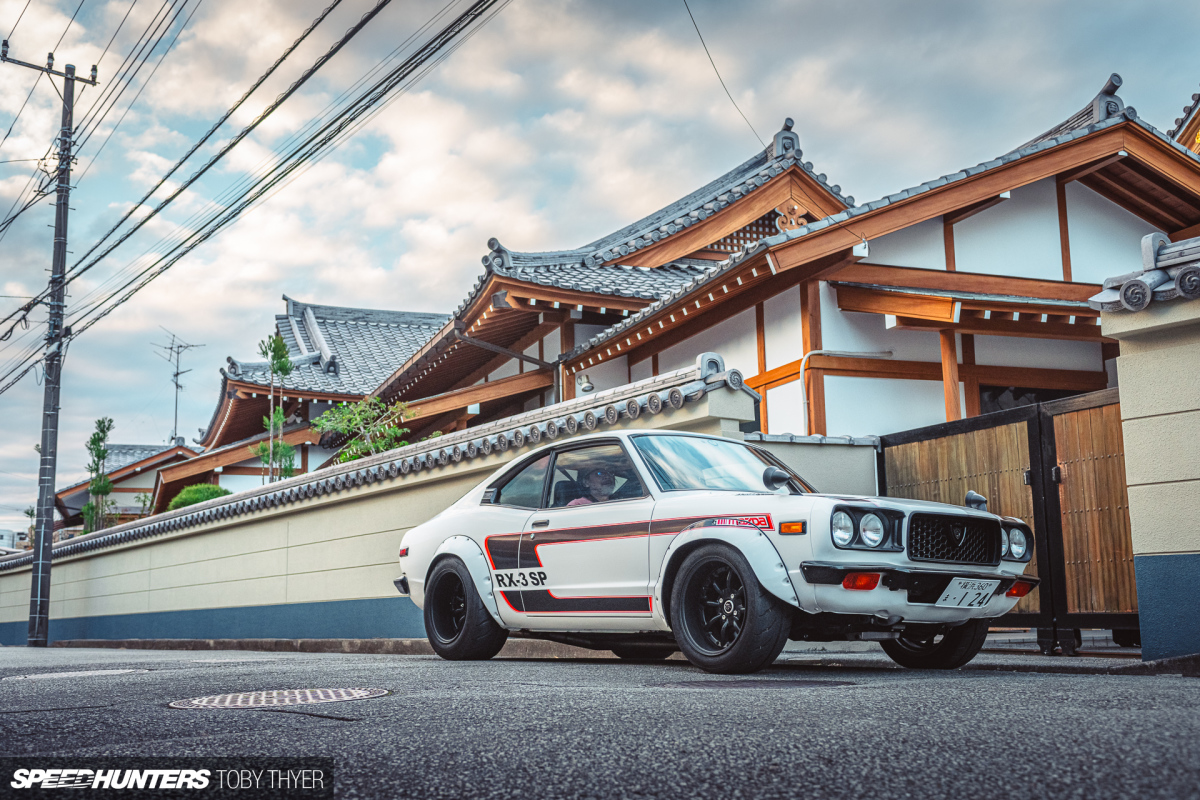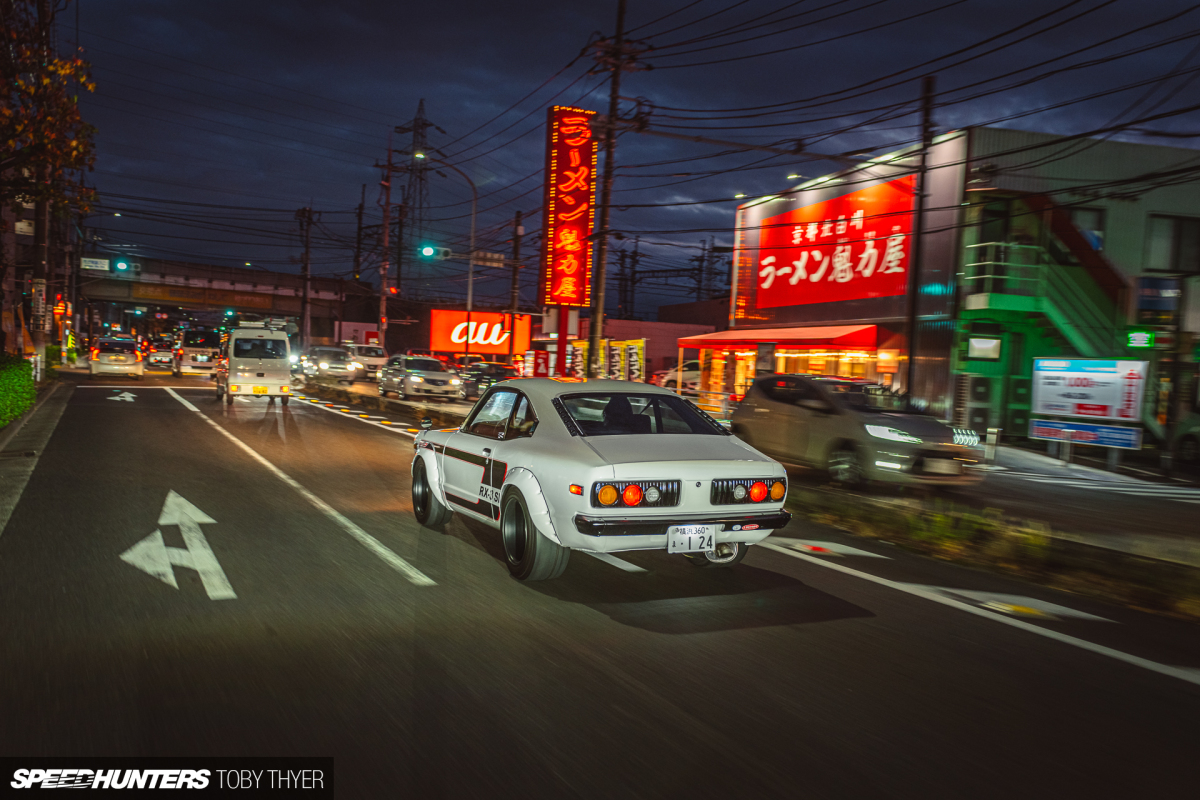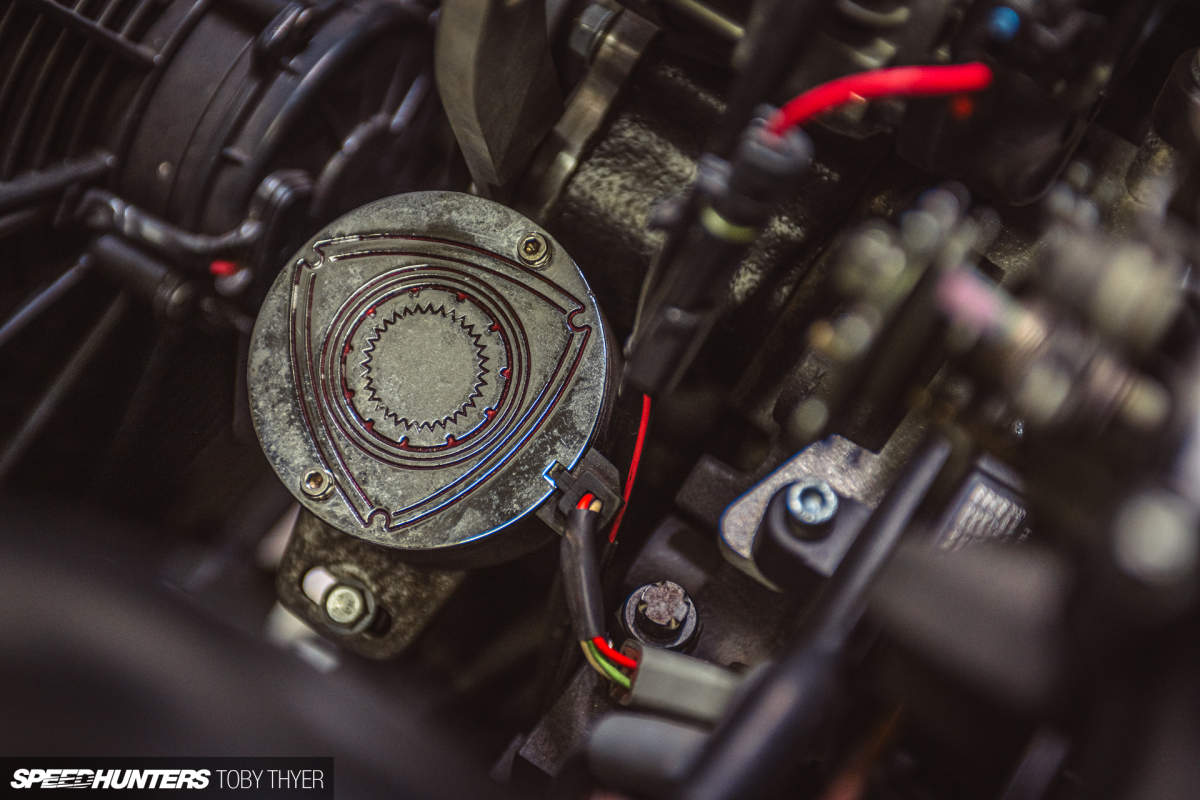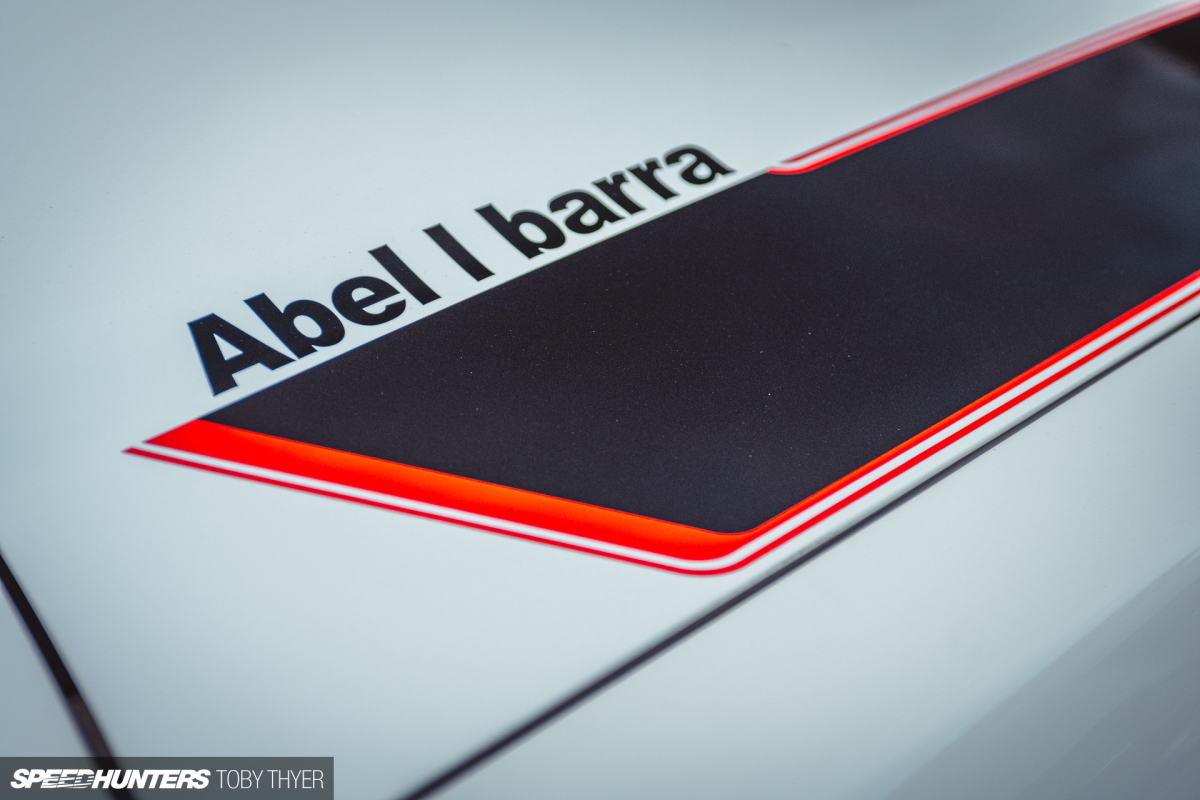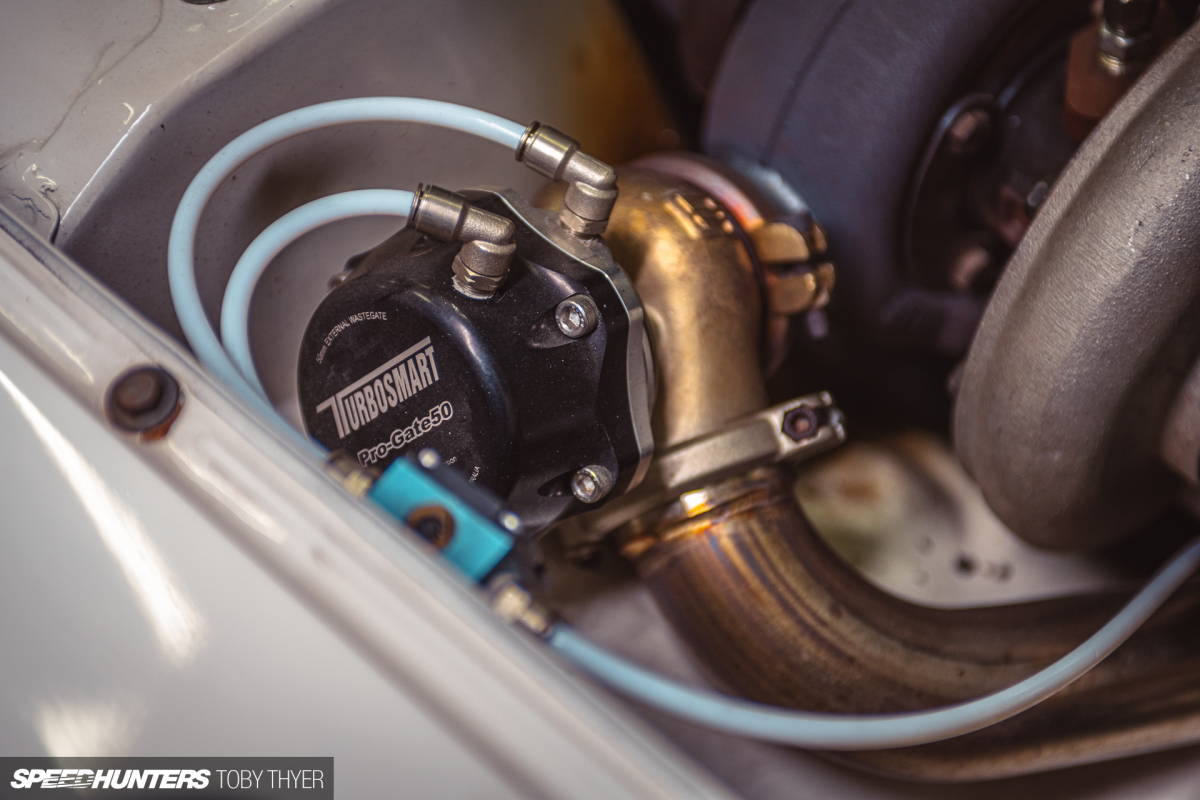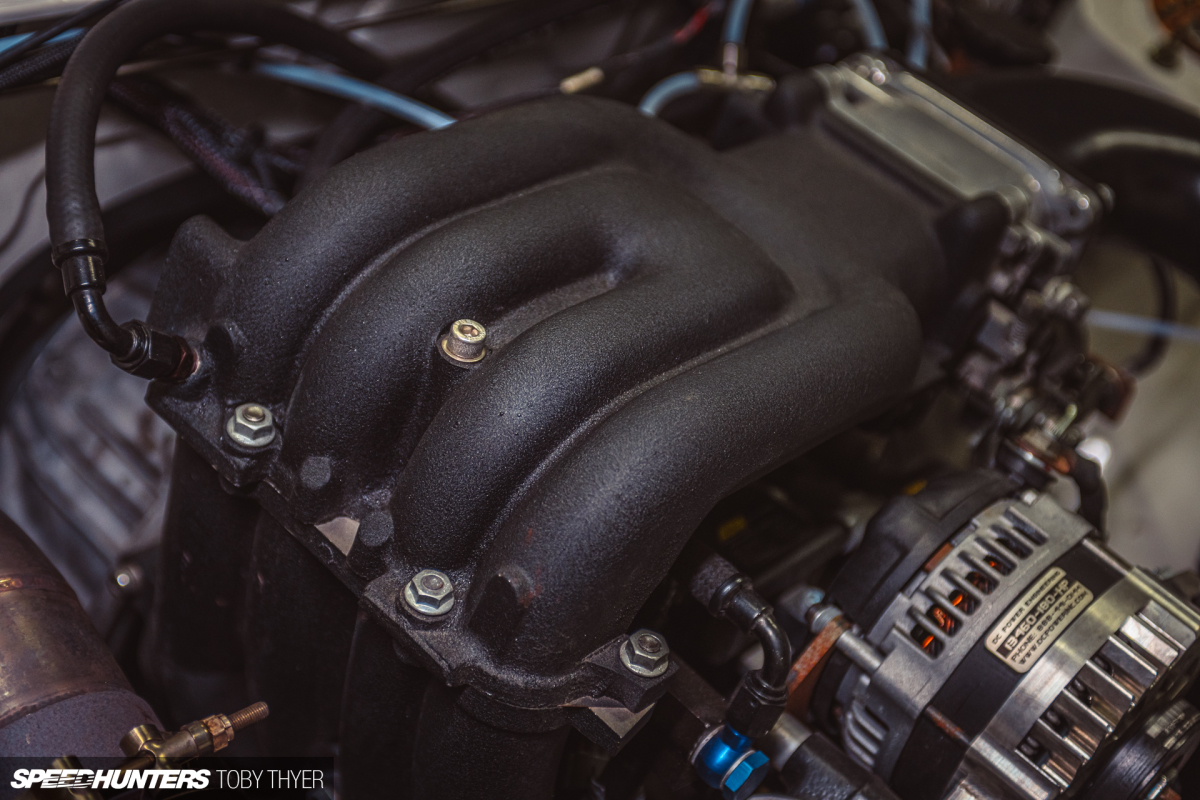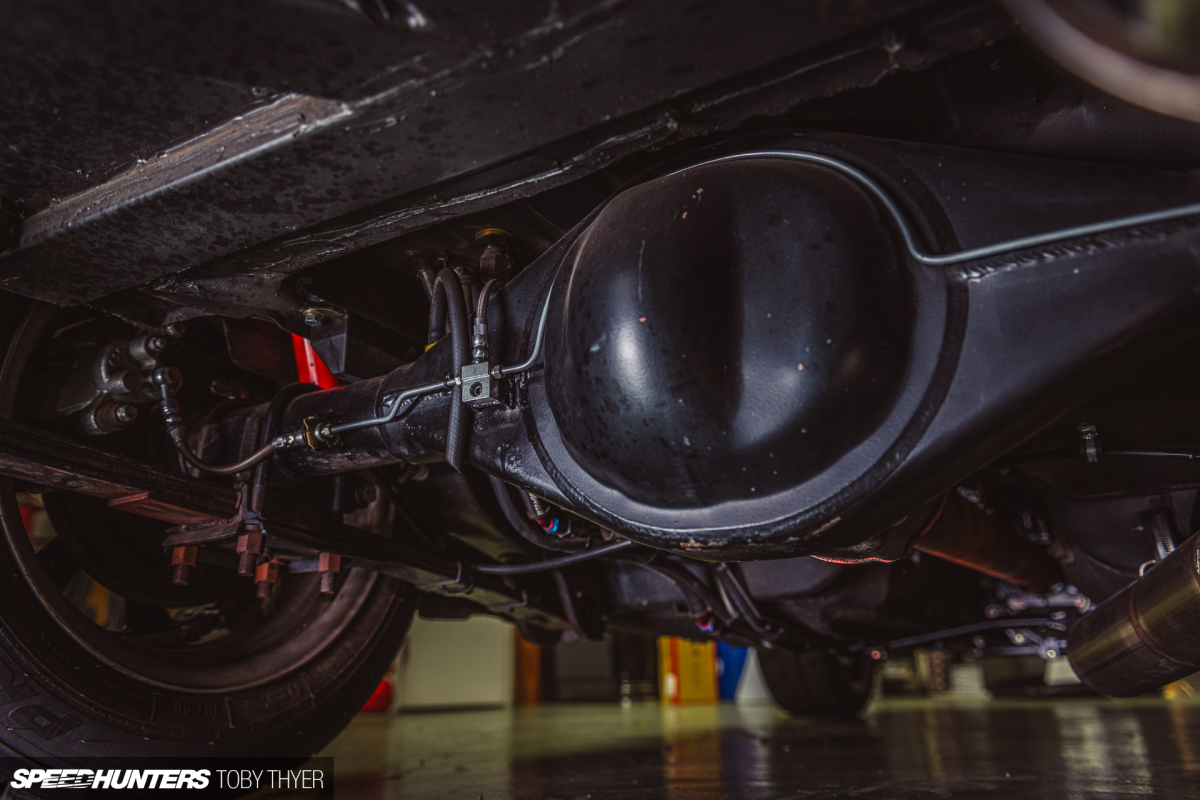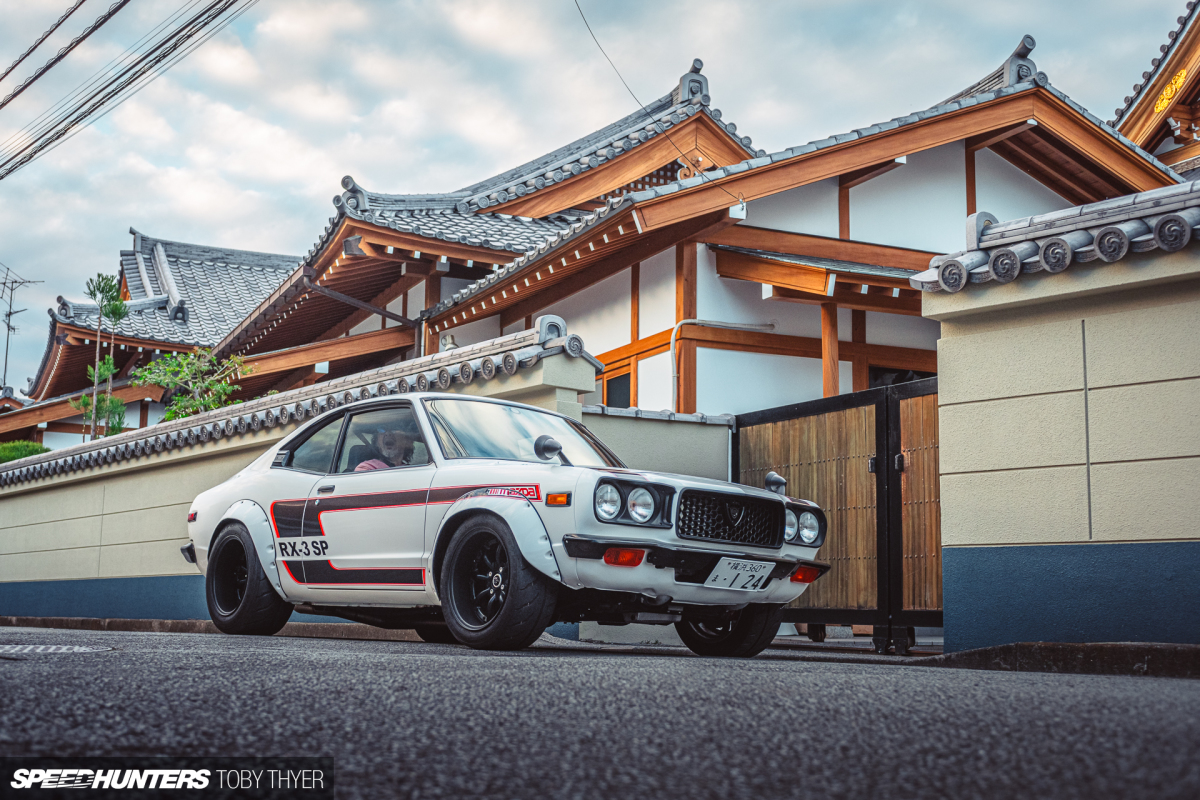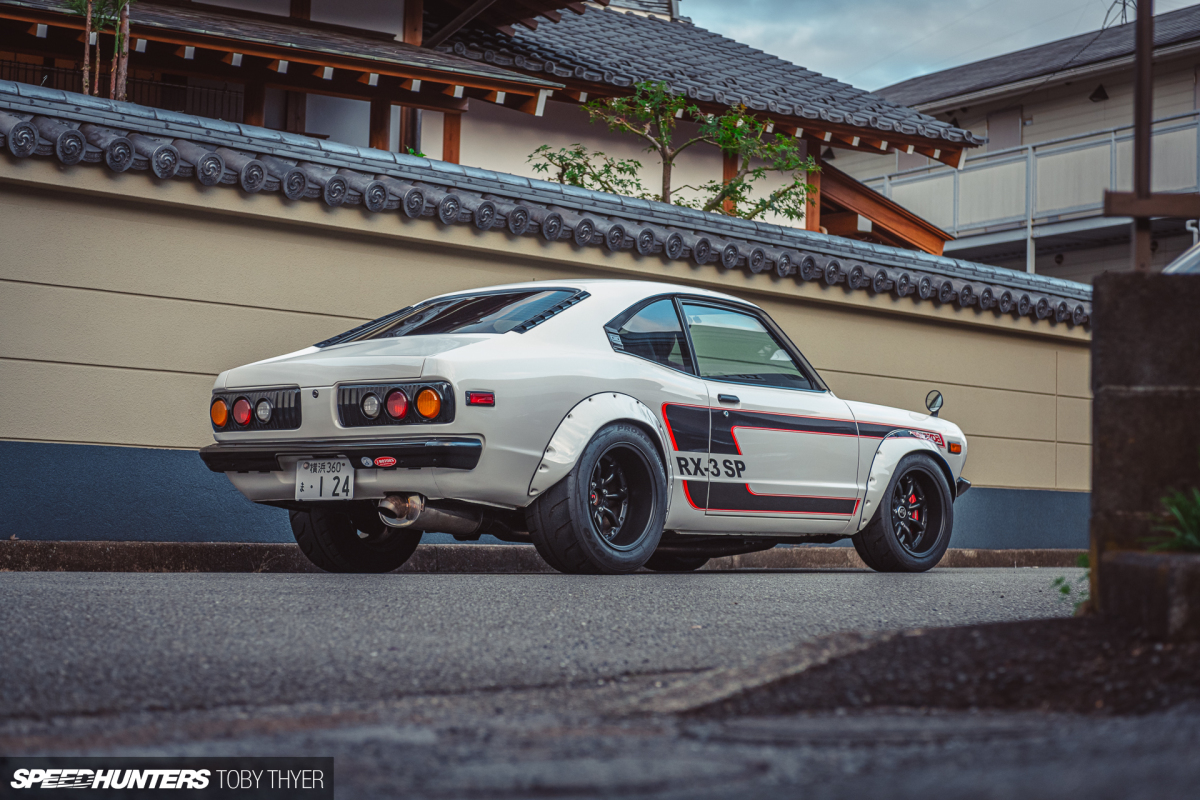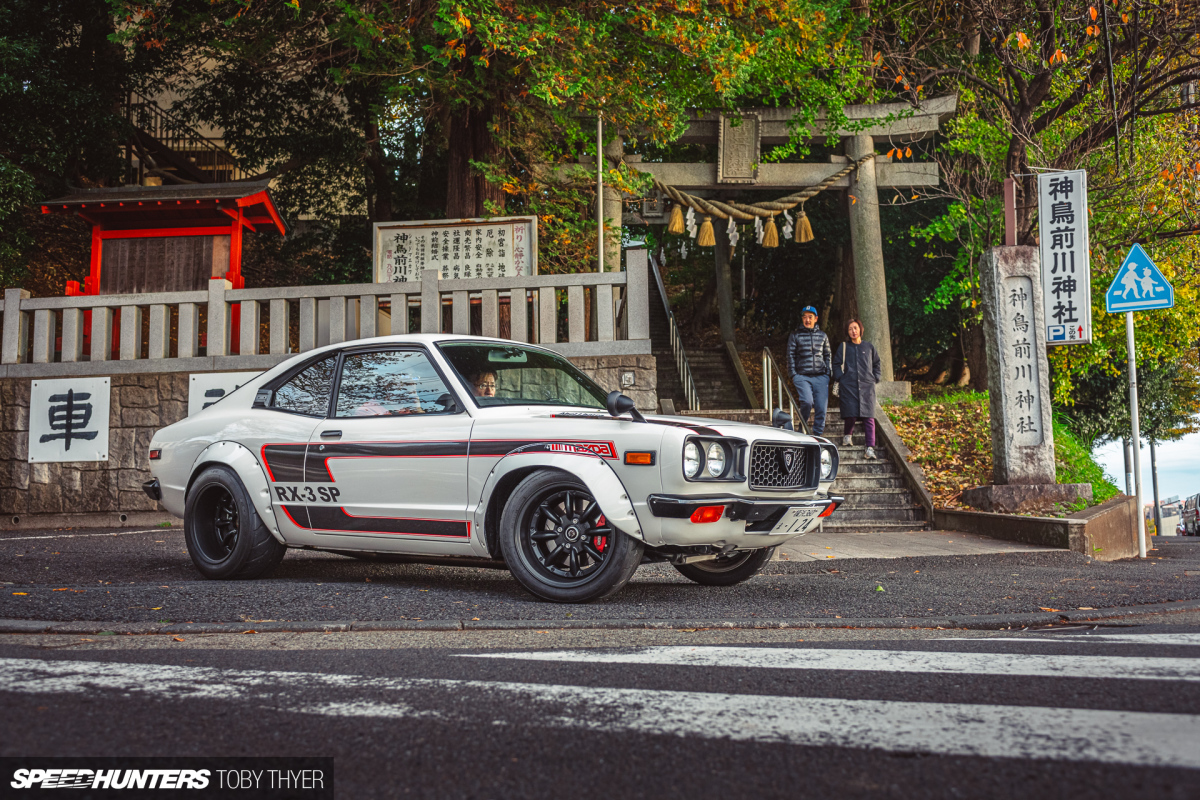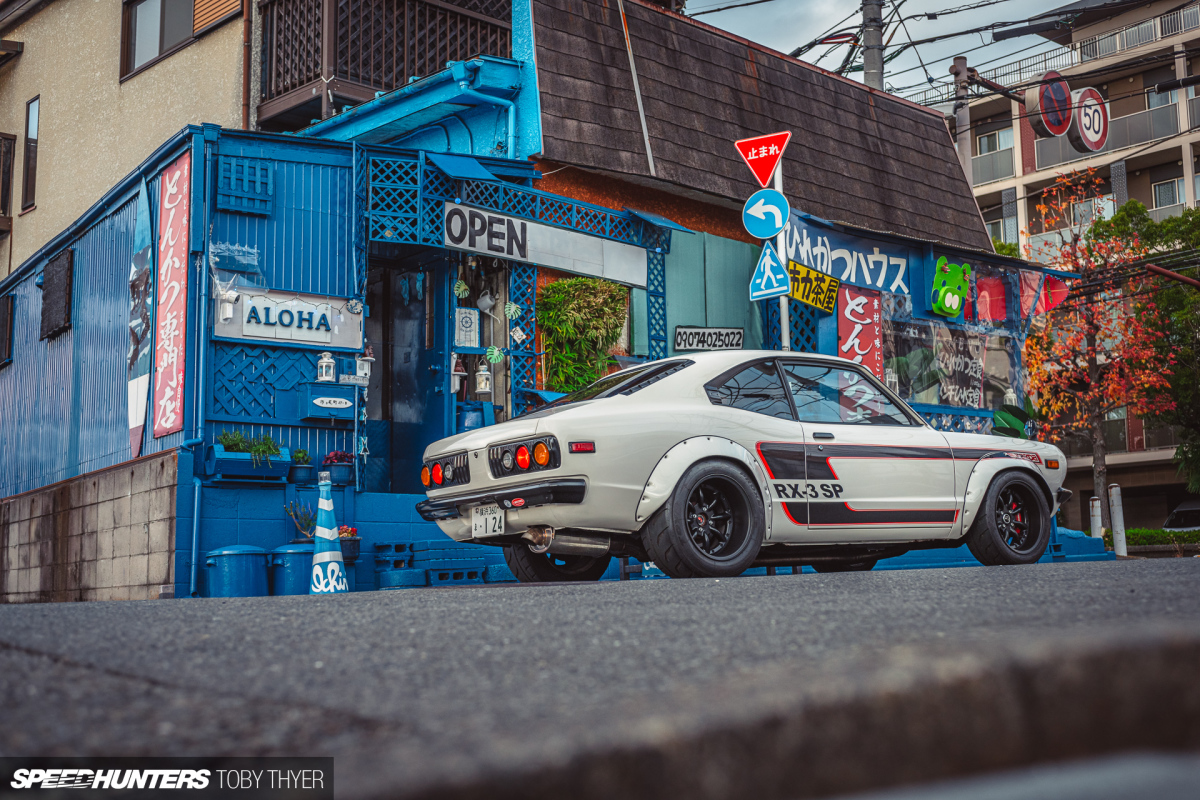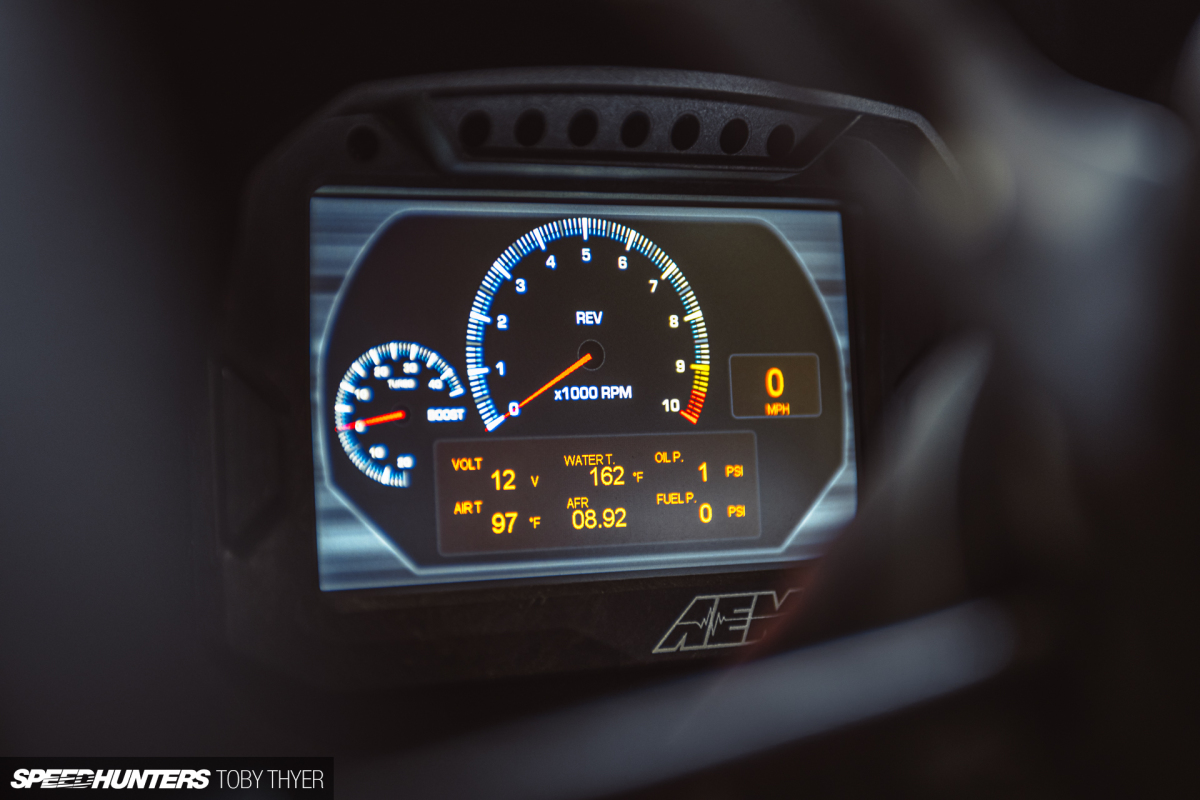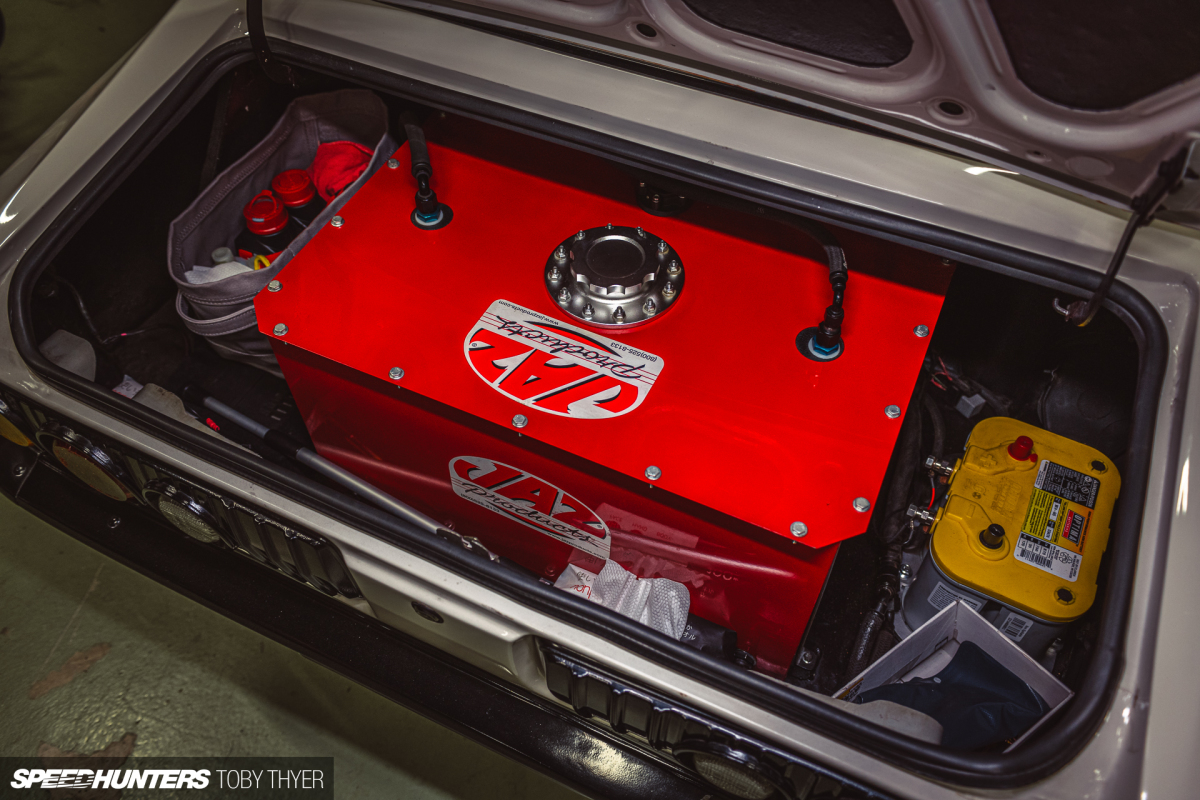I believe there are three stages in the lifetime of a modified car enthusiast. The first stage is 18 to 30 years old, where making as much noise as humanly possible with your car is paramount. Next is the 30 to 50 years old stage, where being courteous to others by keeping your car on the quiet side is the most important thing. The third and final stage – 50 years to old to the grave – loops back around to the beginning; other people’s opinions become irrelevant, so you can make all the noise you want with your car.
Of course, some petrolheads skip the middle part completely and make noise throughout the entirety of their time on earth. I think it’s safe to say that rotary tuning and drag racing legend Abel Ibarra is one of those people.

This 1973 Mazda RX-3 coupe was originally built by Abel in the USA as a special project for a customer. When the old USDM, left-hand drive RX-3 came up for sale stateside, Yokohama-based J-Motors purchased the car and exported it back to the Mazda rotary motherland.
Abel is well-known for a few rotary-powered drag cars, but my favourite is his incredible Flaco Racing Mazda R100. Back in the day, this tiny little car powered by a hard-tuned 13B turbo engine ran a best quarter-mile pass of 7.98-seconds at 159mph (255km/h). At that time it was the fastest import car in America and the fastest rotary in the world.
Suffice to say, Abel knows how to build a quick Mazda.
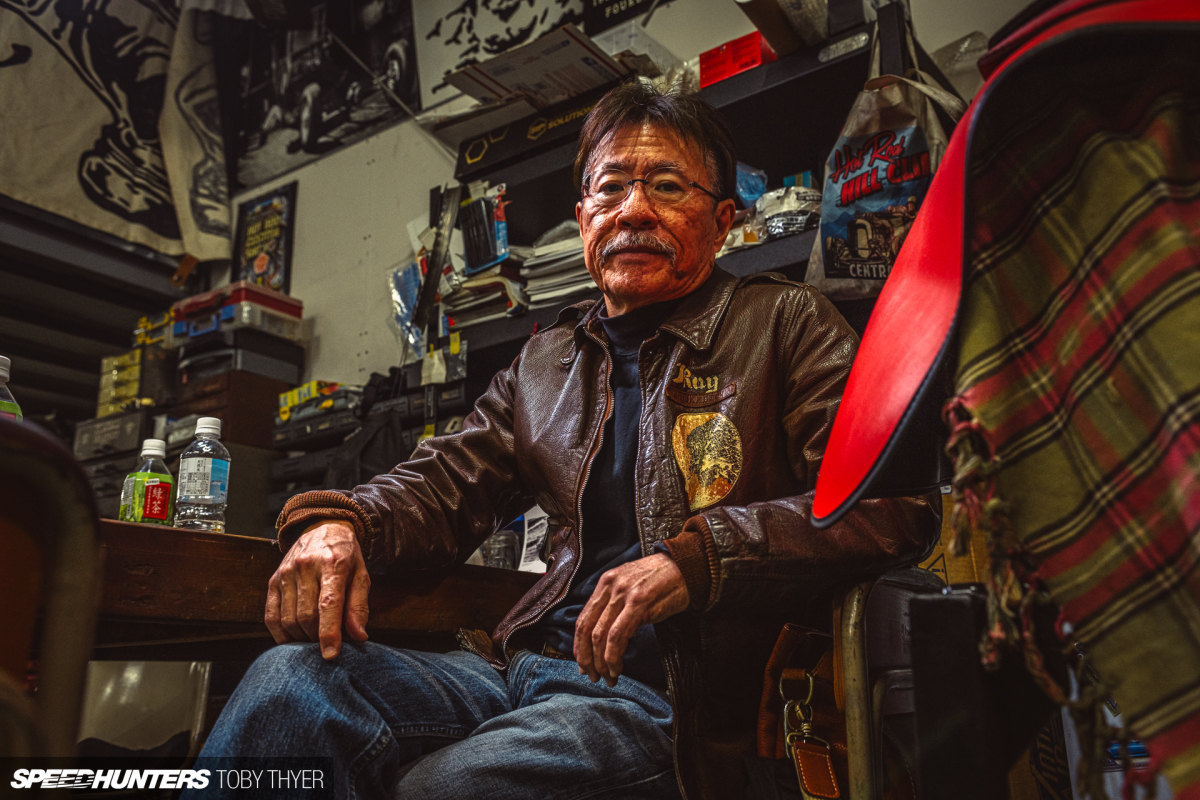
The current owner of this RX-3, Sato-san, is someone who sits comfortably in the third innings of the aforementioned modified car owner’s life stages. This is confirmed by the raucous noise that his Mazda makes; the brap-brap of its ported rotary turbo engine is both raspy and metallic, and certain to upset a few neighbours.
Not that Sato-san really cares; his collection is full of rowdy cars, including a ’65 Ford Mustang Fastback, a ’73 Corvette Stingray, and a ’28 Ford Roadster hot rod. This new acquisition, however, is on another decibel level altogether.
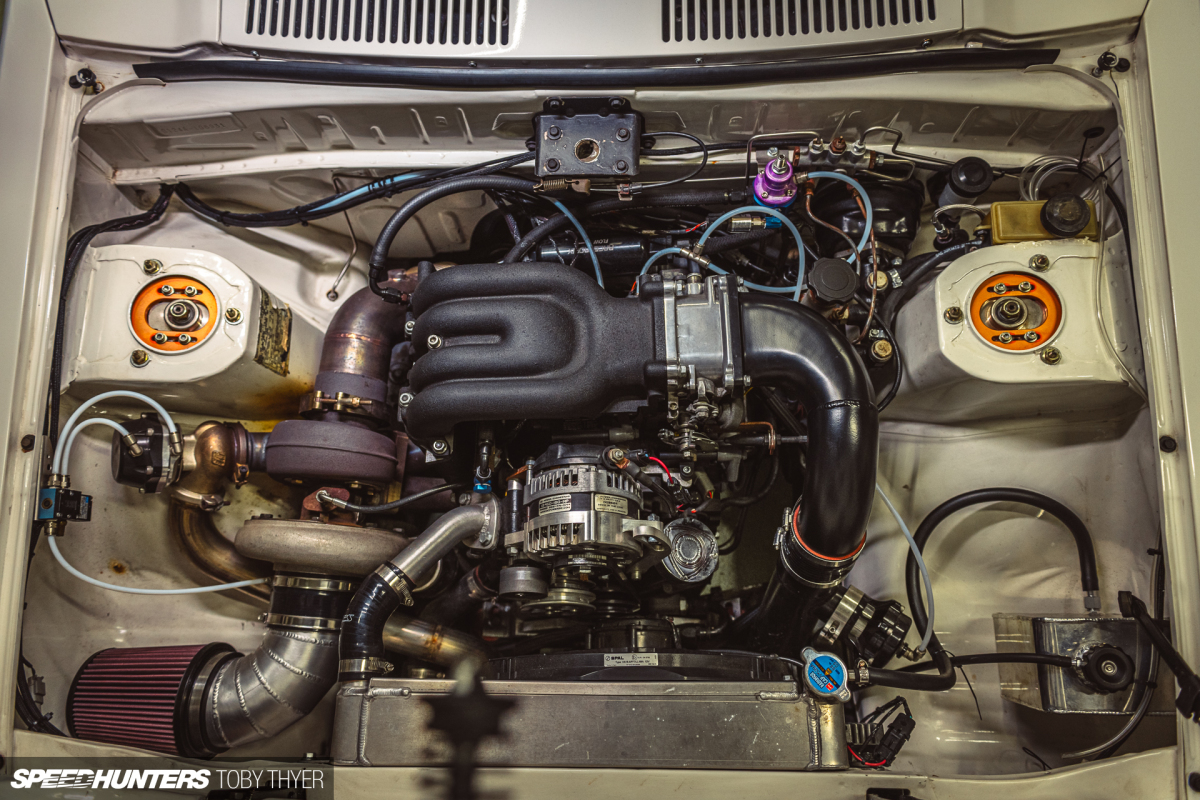
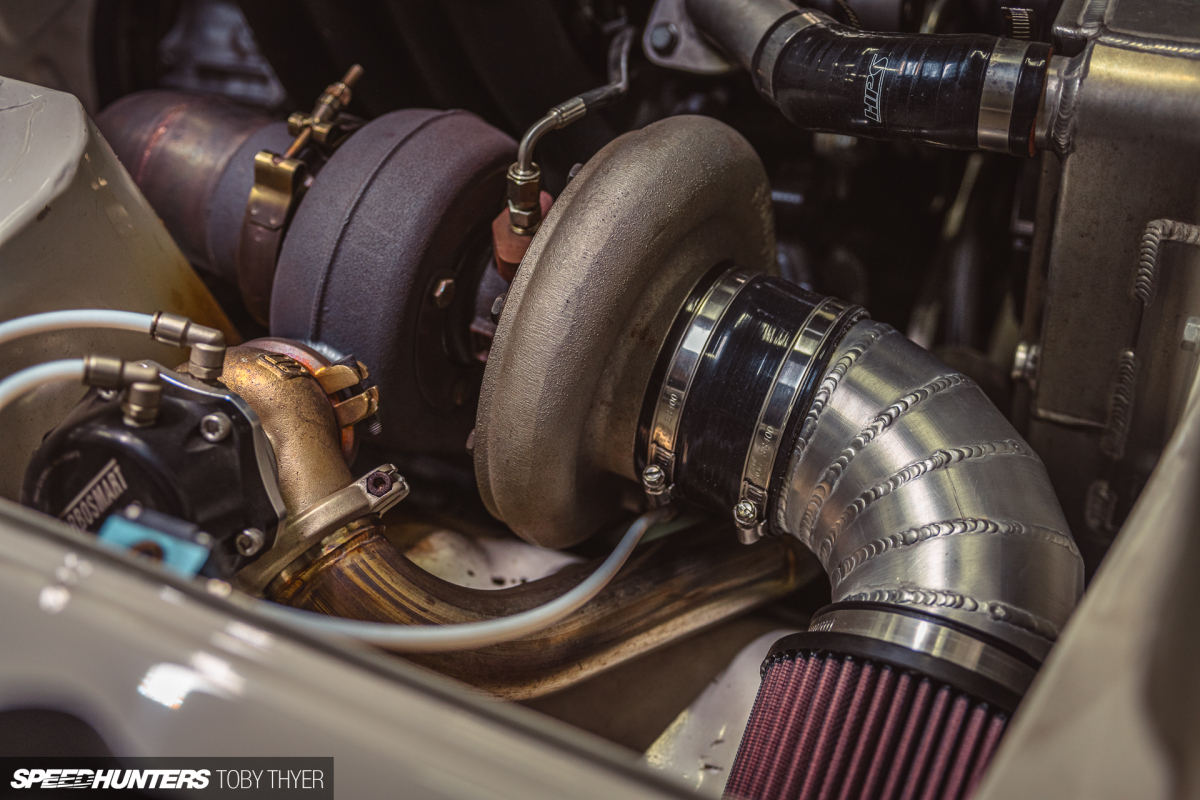
Mechanically, the RX-3 is not quite as wild as the Abel’s R100 – it’s a street car after all – but it definitely punches well above its weight. The semi-bridge-ported 13B twin-rotor engine is force fed air via a large, single BorgWarner turbo, which has a Turbosmart Pro-Gate50 wastegate welded directly onto the exhaust housing. The block is dowelled for strength, the rotors and eccentric shaft are balanced, and Power Seal apex seals keep things tight.
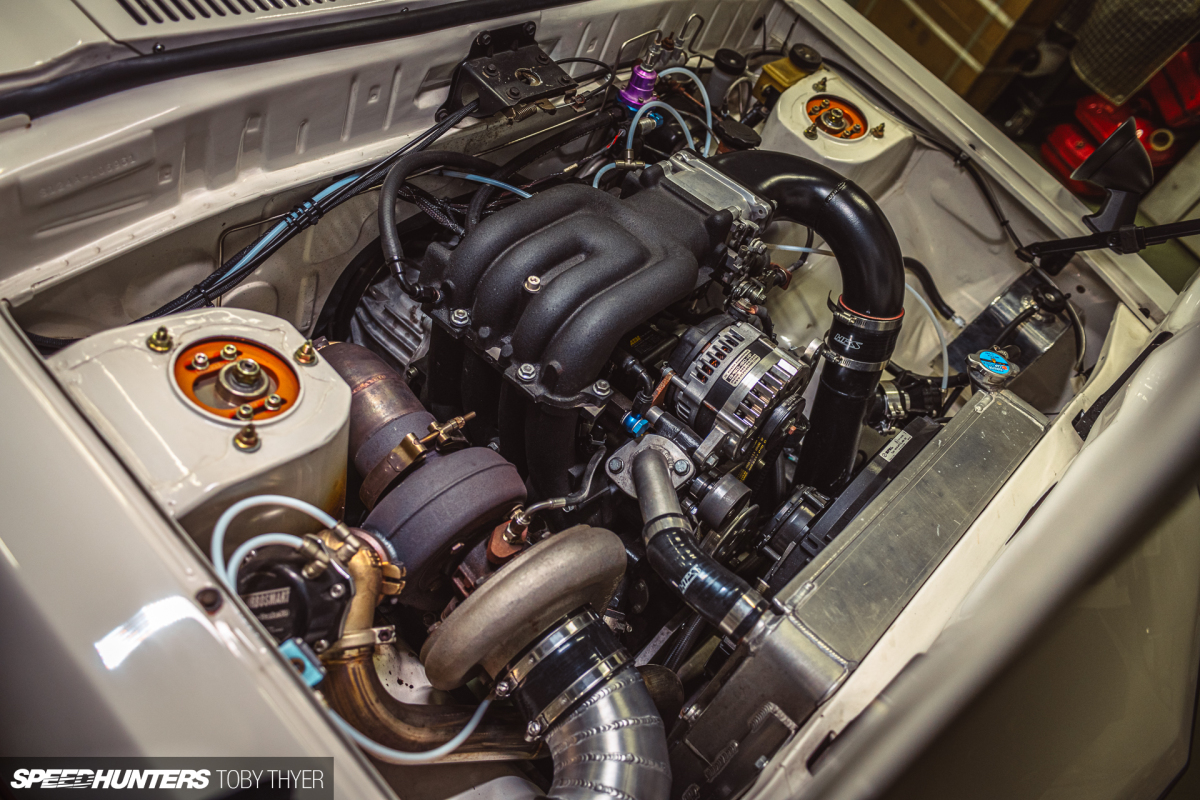
With pump gas supplied by Bosch Motorsport injectors and the firing orders coming from an Adaptronic M2000 engine management system, the 13B was tuned by Abel to 480hp. For a car that left the factory weighing less than a metric ton (sub-2,000lbs), that’s a lot.
Power is sent to the rear wheels through a Nissan CD009 (Z33 350Z) 6-speed manual gearbox with Clutch Masters clutch and alloy flywheel, and out to a Currie Ford 9-inch differential running a 3.90 final drive. Despite the RX-3’s power, I don’t think Sato-san will break the driveline anytime soon.
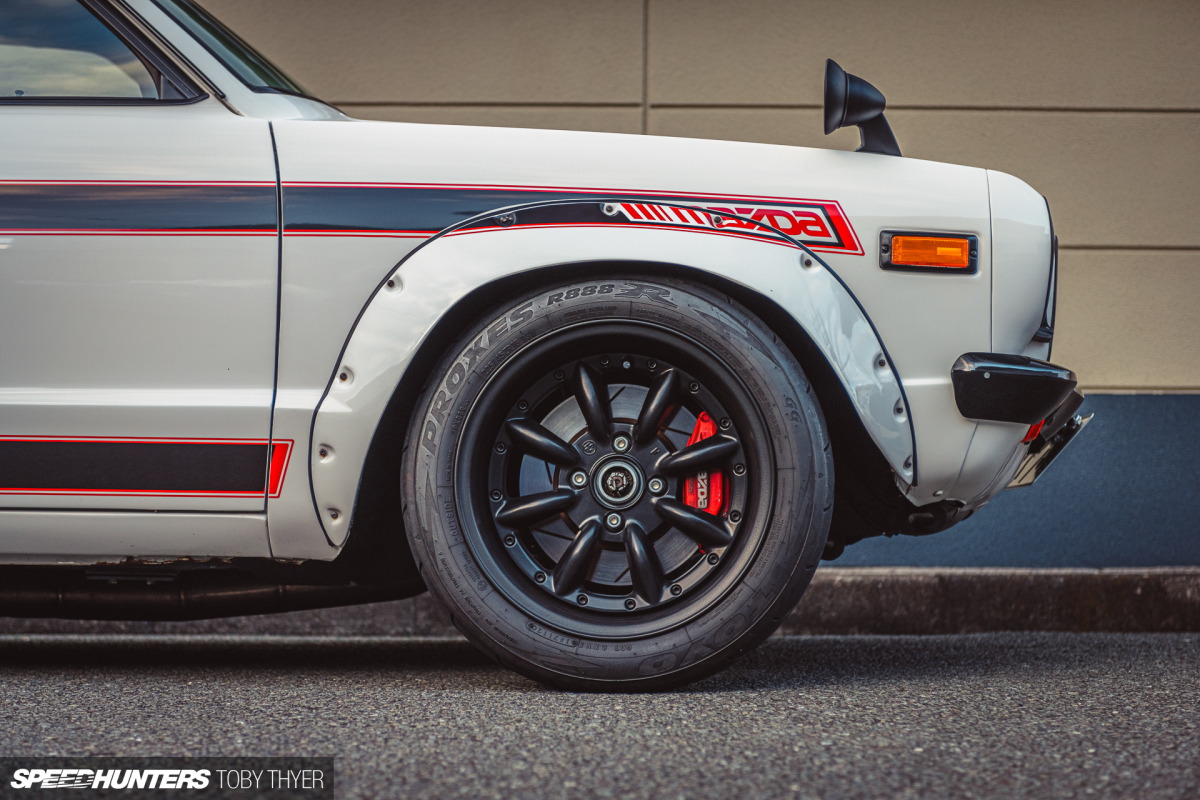
1973 Mazda RX-3s came on steel wheels with 155/80R13 tyres, with latter cars stepping up to crazy 175/70R13s. Let’s just say a lot more rubber was needed here, hence the classic 16-inch RS Watanabe Eight-Spoke wheels shod in grippy Toyo Proxes R888R semi-slicks – sized 225/45ZR16 at the front and 255/50ZR16 at the rear. These bigger wheels opened up room for a brake upgrade, and the Mazda parts bin came through with an FC3S RX-7 4-pot front setup.

The much larger wheel and tyre package was never going to fit under the old Mazda’s stock bodywork, but this was remedied with bolt-on fender flares at all four corners. They’re not huge, like the Katayama Racing-type overfenders seen on RX-3 race cars in the JTCC during the 1970s, but fit nicely with the overall aesthetic.

As a homage to its American roots, the Mazda also wears a custom livery based on that of the RX-3SP, a model that was sold exclusively in the US through 1977 and into ’78. These cars feature the RX-3 Series II nose cone of course, plus ‘special appearance package’ features unique to the SP including the stripe graphics, black bumpers and trim, different rear lights, a deep front air dam and a rear window louvre among other pieces. So the ‘SP’ heritage is just been celebrated here rather than replicated.
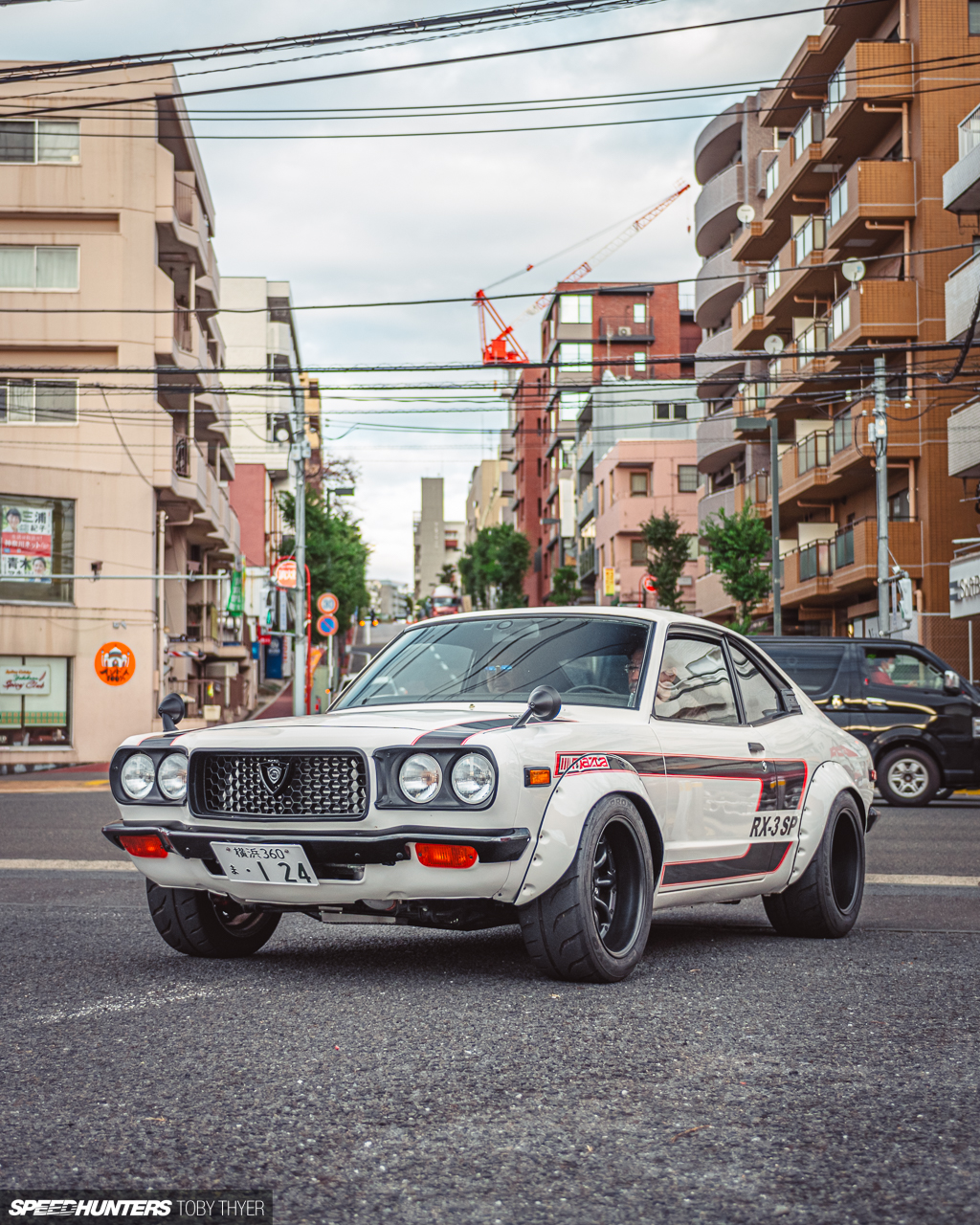
Eagle-eyed readers might have noticed the lack of windscreen wipers. They’ve been removed because the car is simply never driven in the wet. This is partly due to Sato-san wanting to keep the car nice and clean, but mostly for fear of losing control of the back end on a slippery road. That’s understandable given how terrifying it is in the dry when the boost kicks.
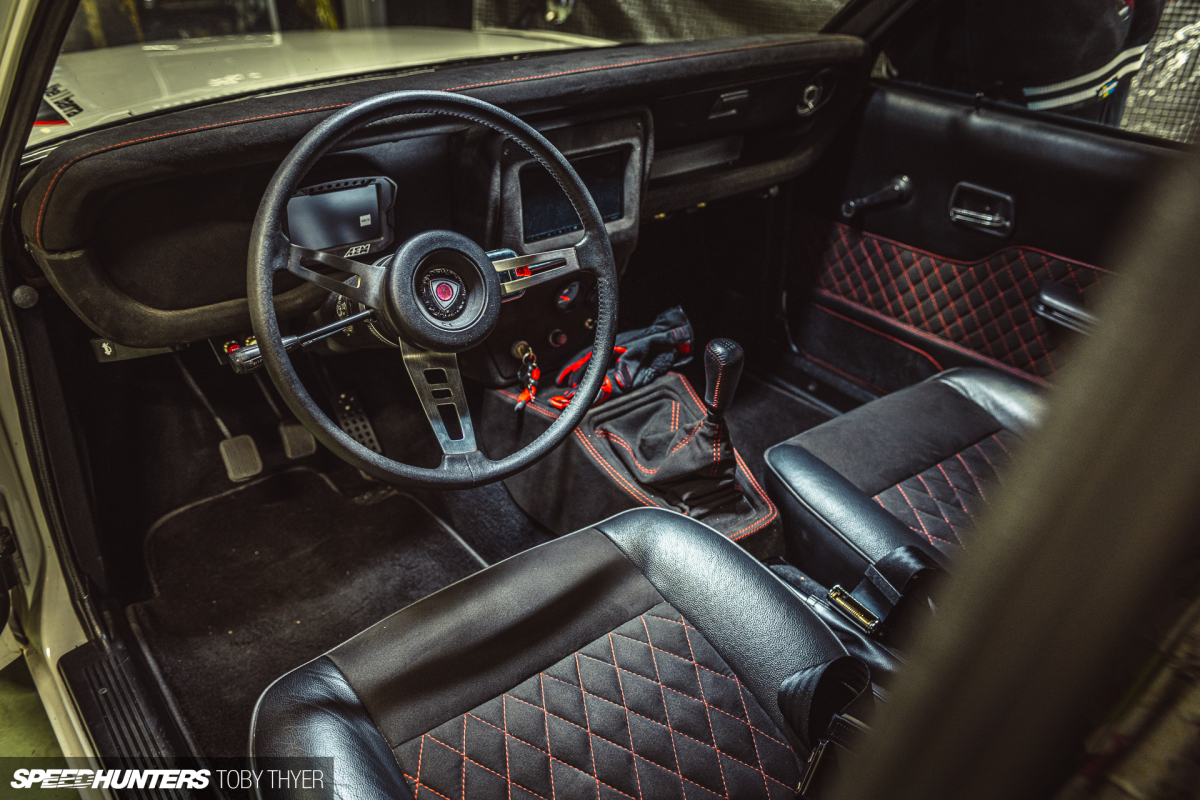
Inside, the RX-3 has been a fully reupholstered with a more modern look, which is simple and well put together. The dash maintains its original silhouette, but all of the analogue instrumentation has given way to an AEM digital display which provides far more data. The trunk meanwhile is filled with a large JAZ fuel cell and Optima battery.
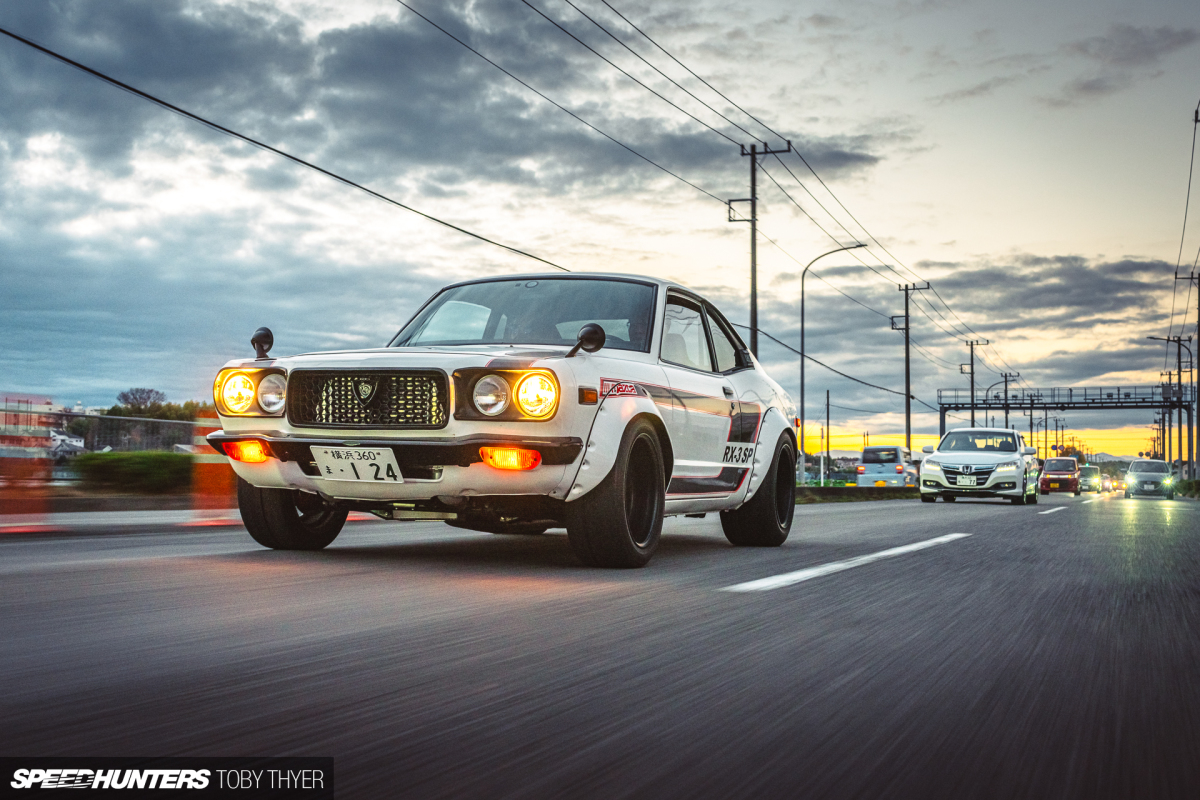
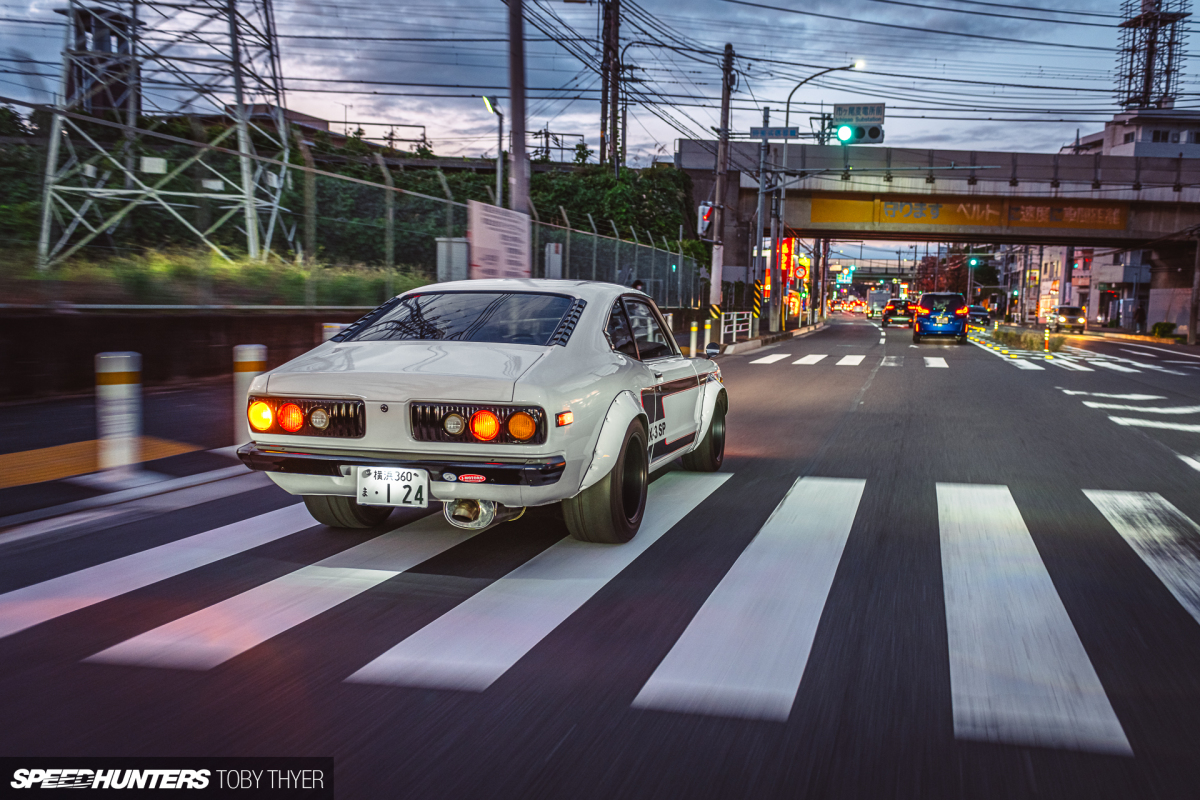
With close to 500hp on tap, only 1,070kg to haul around, and an aggressive but classic look, Sato-san’s RX-3 is something special. Did I mention it sounds spectacular, too?
I can’t wait till I get out of the ‘try to be a considerate, upstanding citizen’ phase and enter the ‘I’ve earned the right to party’ phase. Maybe then I’ll straight-pipe my Impreza.
Toby Thyer
Instagram _tobinsta_
tobythyer.co.uk

